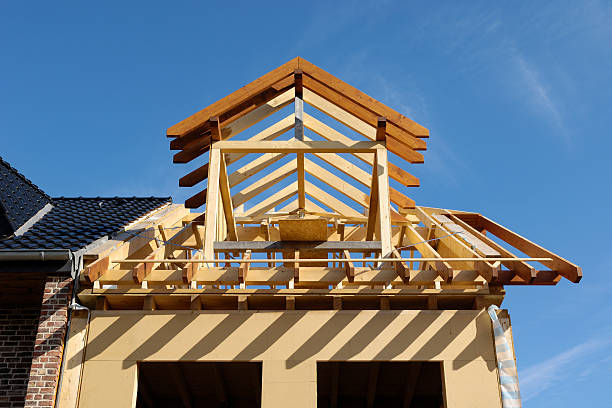Frank Lloyd Wright, one of America’s most celebrated architects, left an indelible mark on the world of architecture with his innovative designs and philosophies. His organic architecture principles and distinctive style continue to captivate enthusiasts and scholars alike. For those keen on experiencing Wright’s genius firsthand, touring his houses offers an immersive journey into his creative vision and legacy.
1. to Frank Lloyd Wright
Frank Lloyd Wright (1867–1959) was an American architect, interior designer, writer, and educator. He pioneered the Prairie School movement and developed the concept of organic architecture, emphasizing harmony between human habitation and the natural world. Wright’s work spans over 70 years, and he designed more than 1,000 structures, including homes, offices, churches, and museums.
2. Importance of Touring Frank Lloyd Wright Houses
Touring Frank Lloyd Wright houses provides a unique opportunity to appreciate his architectural genius up close. It offers insights into his design philosophy, spatial arrangements, and innovative use of materials. Moreover, experiencing these spaces firsthand allows visitors to connect with Wright’s vision and understand the impact of his work on modern architecture.
3. Frank Lloyd Wright’s Architectural Style
Wright’s architectural style is characterized by horizontal lines, flat or low-pitched roofs, open floor plans, and integration with the surrounding landscape. He believed in creating structures that harmonize with their environment and reflect the needs and aspirations of their inhabitants. Wright’s designs often feature geometric shapes, natural materials, and extensive use of glass to blur the boundaries between indoors and outdoors.
4. List of 15 Frank Lloyd Wright Houses Open for Tours
Fallingwater
Located in Mill Run, Pennsylvania, Fallingwater is arguably Wright’s most famous residential design. Built over a waterfall, this iconic house seamlessly blends with its natural surroundings.
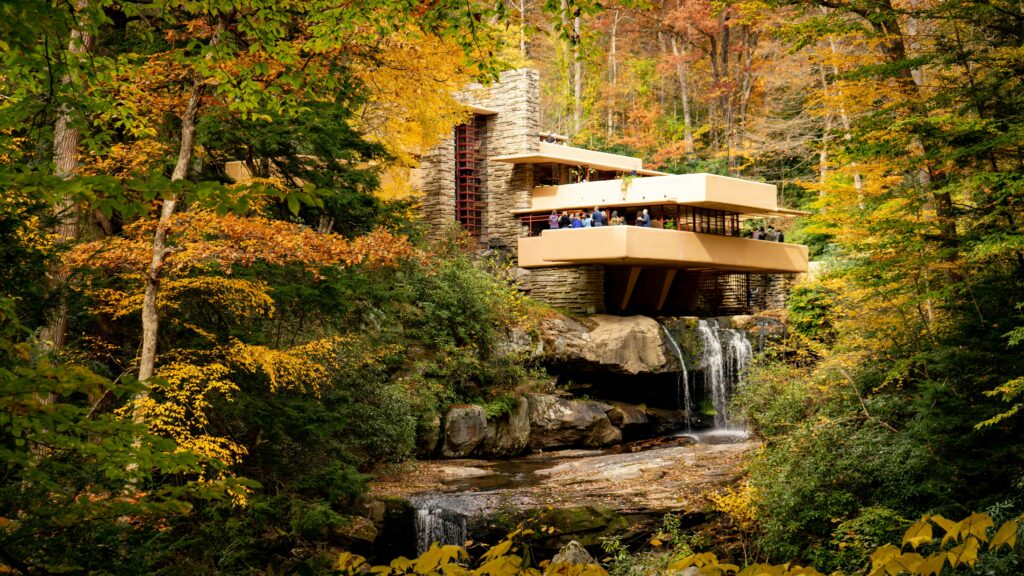
Taliesin West
Situated in Scottsdale, Arizona, Taliesin West served as Wright’s winter home and studio. It showcases his integration of architecture with the desert landscape.
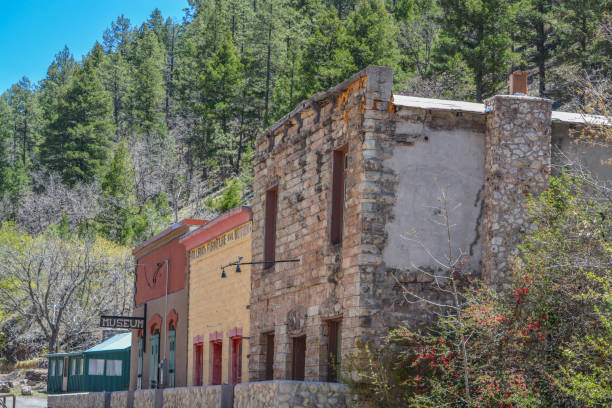
Robie House
Located in Chicago, Illinois, the Robie House is a masterpiece of the Prairie School style, featuring horizontal lines and overhanging eaves.
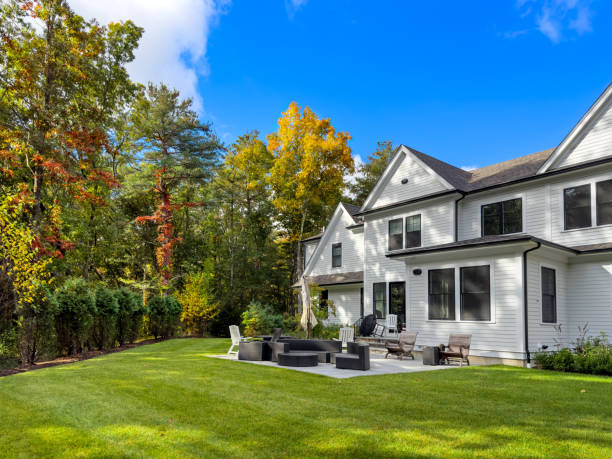
Unity Temple
Located in Oak Park, Illinois, Unity Temple is an early example of modernist architecture, renowned for its innovative use of concrete and geometric forms.
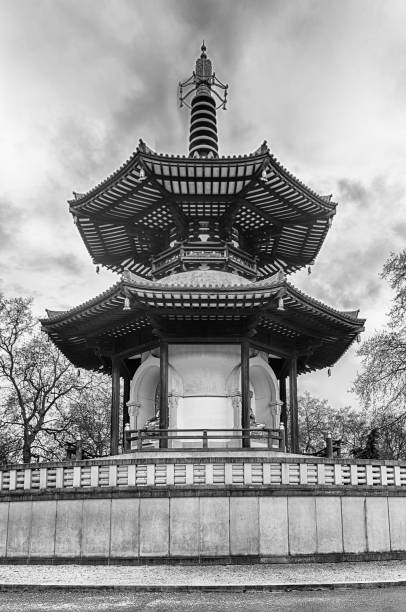
Hollyhock House
Situated in Los Angeles, California, the Hollyhock House exhibits Wright’s interpretation of Mayan-inspired architecture, with its distinct geometric motifs and central courtyard.
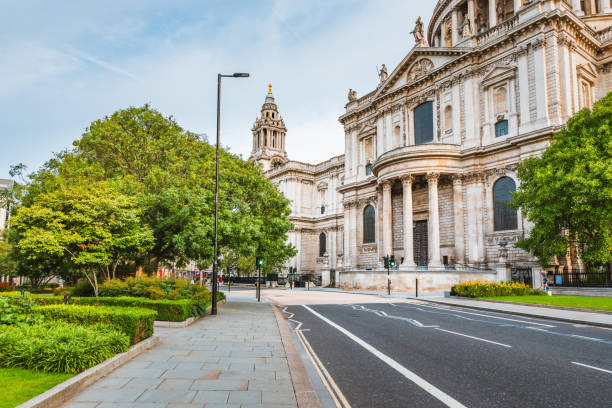
Taliesin
Located in Spring Green, Wisconsin, Taliesin served as Wright’s summer home and studio. It reflects his commitment to organic architecture and sustainable design.
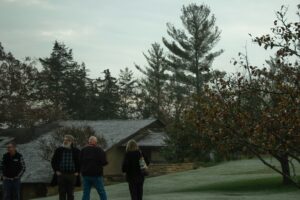
Guggenheim Museum
Situated in New York City, the Solomon R. Guggenheim Museum is a landmark of modern architecture, featuring a spiraling ramp and cylindrical form.
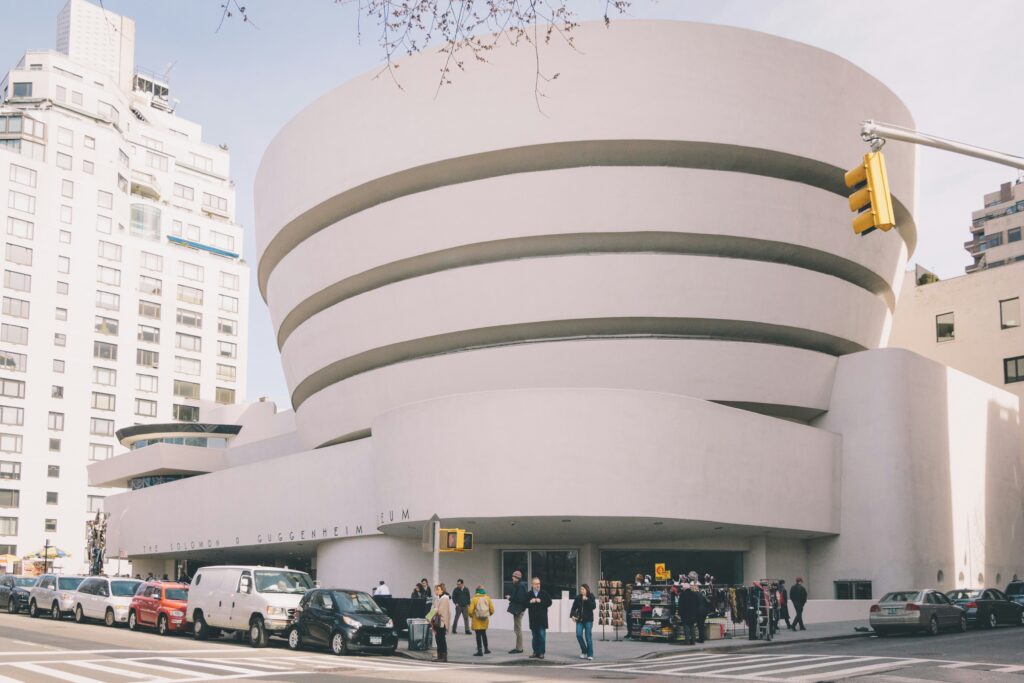
Kentuck Knob
Located in Chalk Hill, Pennsylvania, Kentuck Knob is a Usonian-style house characterized by its integration with the surrounding landscape and cantilevered overhangs.

Zimmerman House
Situated in Manchester, New Hampshire, the Zimmerman House is a prime example of Wright’s Usonian principles, emphasizing simplicity, affordability, and functionality.
Graycliff
Located in Derby, New York, Graycliff is a waterfront estate designed by Wright, showcasing his mastery of organic architecture and seamless indoor-outdoor living.
Martin House Complex
Located in Buffalo, New York, the Martin House Complex comprises several interconnected buildings, exemplifying Wright’s concept of a “total work of art.”
Meyer May House
Situated in Grand Rapids, Michigan, the Meyer May House is renowned for its Prairie School design, featuring a low-pitched roof, horizontal lines, and intricate detailing.
Bachman-Wilson House
Located in Crystal Bridges Museum of American Art in Bentonville, Arkansas, the Bachman-Wilson House is a meticulously restored Usonian home, showcasing Wright’s principles of democratic design.
Pope-Leighey House
Situated in Alexandria, Virginia, the Pope-Leighey House is a compact Usonian home designed by Wright, featuring efficient use of space and innovative construction techniques.
Florida Southern College Architectural District
Located in Lakeland, Florida, the Florida Southern College campus features the largest collection of Wright’s architecture, including the iconic Annie Pfeiffer Chapel and the Water Dome.
5. Detailed Descriptions of Each House
Each Frank Lloyd Wright house offers a unique glimpse into the architect’s creative process and design philosophy. From the organic integration of Fallingwater to the geometric precision of the Guggenheim Museum, each structure tells a story of innovation and ingenuity.
6. Tips for Touring Frank Lloyd Wright Houses
When planning a tour of Frank Lloyd Wright houses, consider booking in advance, as many sites have limited capacity. Wear comfortable shoes for walking and be prepared to immerse yourself in the architectural marvels of Wright’s imagination. Additionally, guided tours offer valuable insights into the history and significance of each site.
READ ALSO: Ed Sheeran Details the Lovestruck Jitters in Sweet New Single
FAQs
- Are all Frank Lloyd Wright houses open to the public?
- While many of Wright’s houses are privately owned or restricted, several are open to the public for tours.
- Can I take photographs during the tours?
- Photography policies vary by site, so it’s best to check with the tour operators beforehand.
- Are there age restrictions for touring Frank Lloyd Wright houses?
- Most tours are suitable for all ages, but some sites may have restrictions for safety reasons.
- How long do tours typically last?
- Tour durations vary depending on the site and the type of tour selected, ranging from one to two hours on average.
- Are guided tours necessary, or can I explore the houses on my own?
- While some sites allow self-guided tours, guided tours provide valuable insights and context to fully appreciate the architectural significance of each house.
Conclusion:
Touring Frank Lloyd Wright houses is more than just sightseeing; it’s an opportunity to explore the legacy of one of the greatest architects of the 20th century. From the iconic Fallingwater to the serene Taliesin West, each house offers a glimpse into Wright’s visionary mind and enduring influence on modern architecture.
Get ready to embark on a journey through architectural history and experience the genius of Frank Lloyd Wright firsthand.

